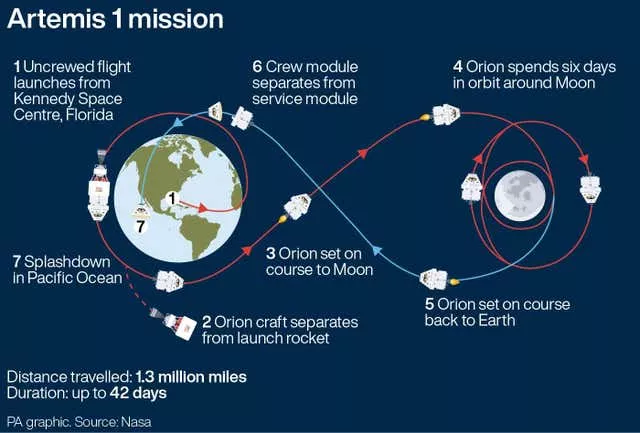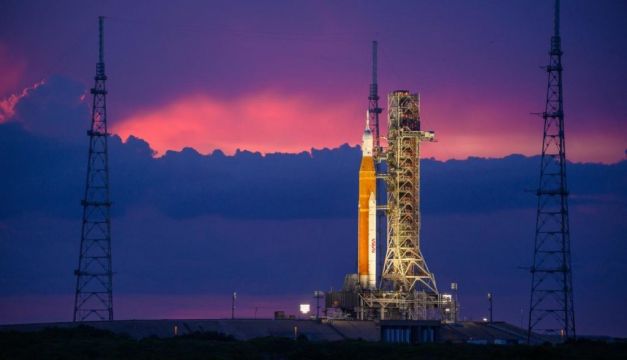Nasa will try to launch its latest moon rocket on Saturday after a failed attempt earlier this week.
Initially planned for August 29th, the launch had to be abandoned moments before lift-off due to a temperature problem in one of the engines.
Nasa is now targeting 7.17pm (Irish time) for the launch of Artemis 1, the first integrated test of the agency’s Space Launch System (SLS) rocket, Orion spacecraft, and the ground systems at the agency’s Kennedy Space Centre in Florida.
The test is an uncrewed mission around the moon that will pave the way for a crewed, flight test and future human lunar exploration as part of Artemis.

Meteorologists with the US Space Force Space Launch Delta 45 predict a 60% chance of favourable weather conditions at the beginning of the two-hour launch window.
The 322ft (98m) tall Space Launch System (SLS) rocket, which is the world’s most powerful rocket to date, is due to take the Orion capsule, powered by the Airbus-built European Service Module (ESM), into the moon’s orbit.
The flight, which will carry mannequins rather than astronauts, marks the next chapter in putting humans back on the moon.
There will be people on board for subsequent missions, with the first crewed flight into space scheduled for 2024.

The UK is part of the Artemis programme, making contributions to the Lunar Gateway – a space station currently in development with the European Space Agency – working alongside the US, Europe, Canada and Japan.
Humans last reached the moon some 50 years ago, and the latest mission is about proving people can make longer and more sustainable trips there.
It will also assess whether some infrastructure can be built on and around the moon, allowing humans to survive on another planetary body.
The mission duration is 37 days, 23 hours, 53 minutes and in total it will travel 1.3 million miles.







